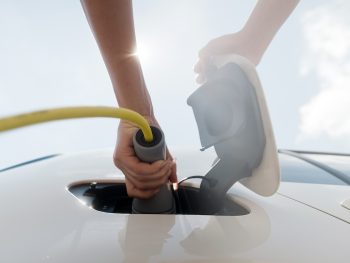UK public EV charging network up 45% in last year
The UK’s public electric vehicle charging network rose to some 53,700 devices in 2023; up 45% on the previous year.

An extra 16,622 chargers went live in 2023
The Department for Transport’s latest quarterly report on EV charging reveals that an extra 16,622 chargers went live last year. This follows a 9% rise in Q4 when total installed devices increased by 4,457.
Slower charging devices – with a power rating of 3kW up to 8kW – continued to account for the majority of chargers, with 31,910 units, accounting for 59% of the network.
But 10,118 devices had 50kW of power or above, representing 19% or nearly one in five of all charging devices.
Almost half (45% / 24,121 chargers) of the network were designated as ‘destination’ chargers while over a third (39% / 20,705 chargers) were ‘on street’ chargers.
The expansion in charging infrastructure actually outpaced take-up of plug-in vehicles. Figures from the Society of Motor Manufacturers and Traders (SMMT) show that registrations of new battery electric cars rose 16.5% in 2023 while plug-in hybrid car registrations rose 39.3%.
EVA England, which is working to accelerate the transition to electric cars, welcomed the charge point growth.
James Court, chief executive of the association, said: “Recent stats show that EVs represented over 16% of sales last year, meaning a growing number of EVs on UK roads and, crucially, more EV drivers making use of our public charging network. Our most recent EVA England survey revealed 12% of EV drivers are already solely reliant on the public network to meet all of their charging needs. We urgently need to see charging infrastructure keep pace with increasing demand, and today’s figures give EVA England confidence in the future.”
Campaign group Transport & Environment UK also greeted the statistics – but pointed out that work to tackle regional disparities remained paramount.
While the DfT said public charging provision increased in all regions of the UK, its figures for Q4 show the South West had the greatest increase at 17%, whilst the North East had an increase of 3.9%. London had the greatest increase in absolute number of devices at 1,553 devices, followed by the South West at 524.
Richard Hebditch, director of T&E England, said: “A growth rate of charge points of around 45% in one year is a heartening achievement – and shows that it’s more than possible to meet, and even exceed, our target of 300,000 public charge points by 2030.
“But there are still big regional disparities in charge point distribution and that needs to be tackled as a priority. For a government elected on a promise to level up the country, ministers clearly need to deliver the Local Electric Vehicle Infrastructure (LEVI) funding so councils in regions such as Yorkshire and the North West can level up their provision of charging instead of relying on London to deliver the numbers.”
The DfT also noted that charging device speed categories have changed as of October 2023.
The new categories are 3kW up to 8kW; 8kW to 49kW; 50kW to 149kW, and 150kW and above.
The Office for Zero Emission Vehicles (OZEV) is working with industry on the naming conventions for these new categories – but in the meantime, the DfT said it would refer to the new categories by their power rating for its statistics.

